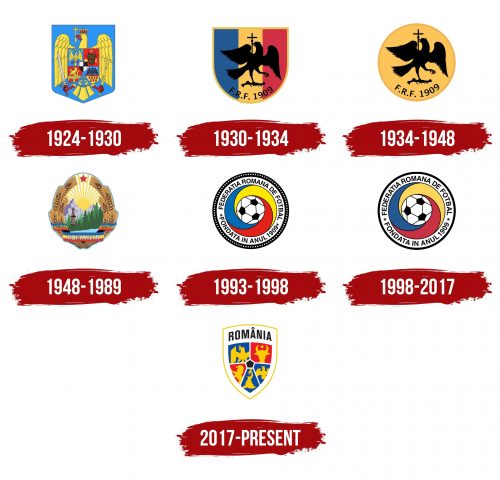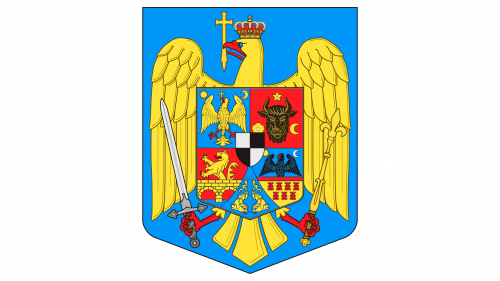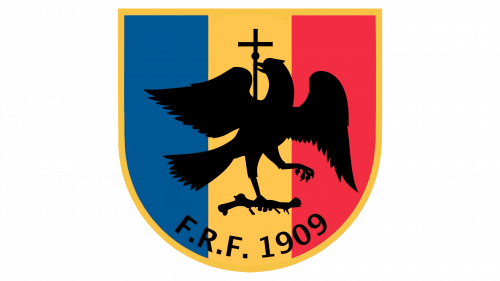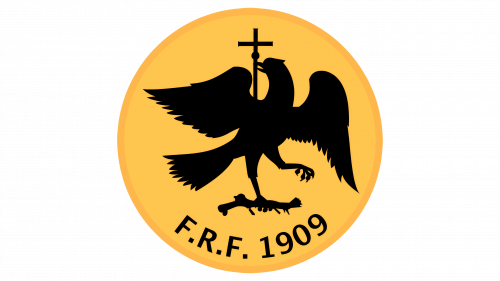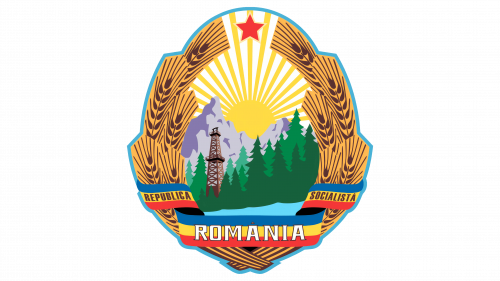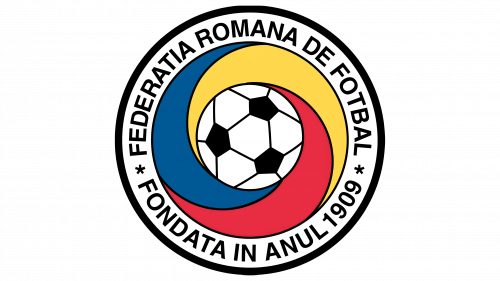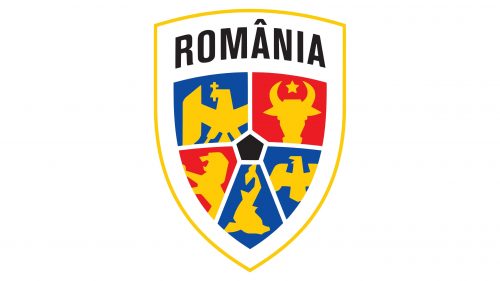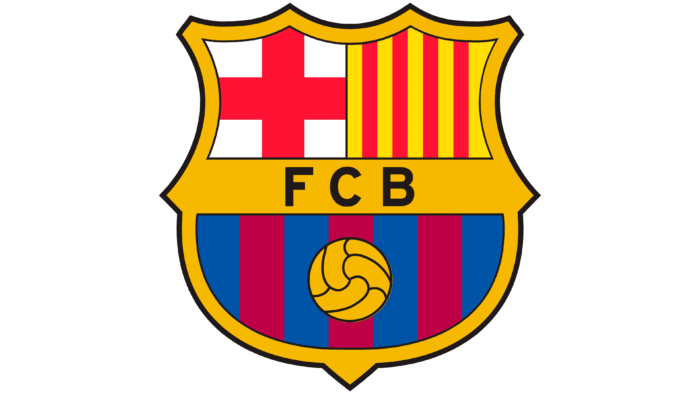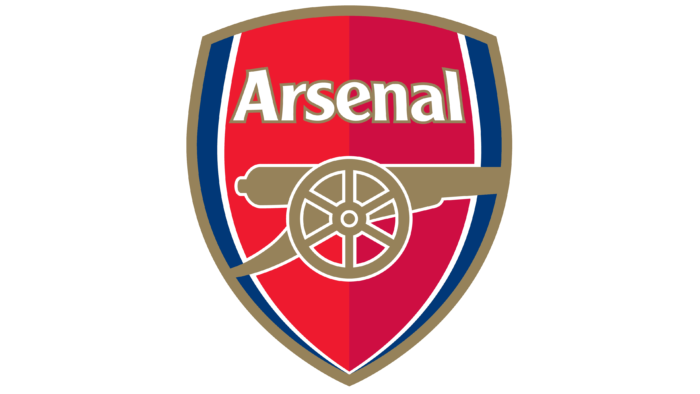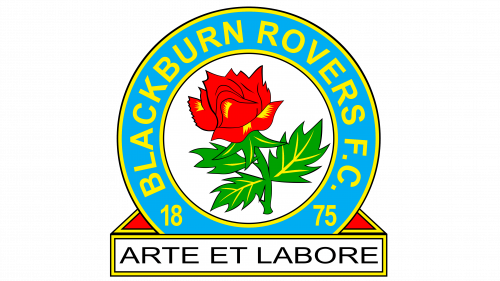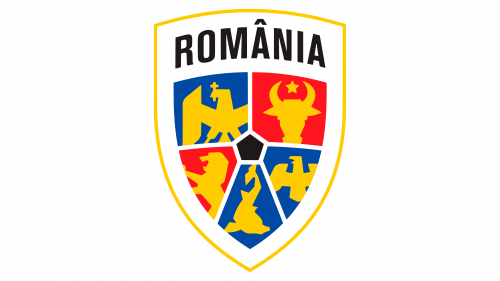 Romania National Football Team Logo PNG
Romania National Football Team Logo PNG
The Romanian national football team’s logo symbolizes unity. It represents the common historical lands that gradually formed Romania’s current territory. The emblem showcases the team’s strength and collective effort in the name of the country.
Romania National Football Team: Brand overview
The Romanian national football team, steeped in history and tradition, began its journey in the early 20th century. Known for an attacking style and memorable personalities, Romania’s football legacy officially kicked off in 1922. Their first match, against Yugoslavia, ended in a close 1-2 loss. Romania participated in three World Cups (1930, 1934, 1938) throughout pre-war, though significant success eluded them. In the 1930s, Romania shone brightly, winning the Balkan Cup twice (1929/31, 1933). Their best World Cup run during this era was reaching the Round of 16 in 1930, with campaigns in 1934 and 1938 ending at the group stages.
The 1960s and 1970s marked a golden era for Romanian football, with the team earning the nickname “Carpathian Eagles.” They made a historic quarterfinal appearance at the 1970 World Cup and secured numerous victories against top nations. Notable players from this era included Nicolae Dobrin, Florea Dumitrache, and Mircea Lucescu. Romania also qualified for the 1964 European Championship and achieved a notable victory over England in the 1970 World Cup.
Following the 1989 revolution and the fall of communism, Romanian football saw a resurgence. The 1990s and early 2000s brought consistent appearances in major tournaments. Stars like Gheorghe Hagi, Ion Sabău, and Viorel Moldovan led the team to the World Cup finals in 1990, 1994, and 1998, as well as Euro 1996. The standout performance came at the 1994 World Cup in the USA, where Romania advanced to the quarterfinals but narrowly lost to Sweden in a penalty shootout. Gheorghe Hagi, Gheorghe Popescu, and Florin Răducioiu were key figures during this period.
The early 2000s saw a decline in Romania’s performance. Despite talents like Adrian Mutu and Cristian Chivu, the team missed the 2002 World Cup and struggled at Euro 2000 and Euro 2008. They also failed to qualify for the 2002 World Cup, Euro 2004, and the 2006 World Cup. Euro 2008 was the only major tournament they reached in this period, but they did not advance beyond the group stage. The departure of the 1990s “golden generation” marked the end of an era.
Rebuilding became a priority in the 2010s, but Romania failed to qualify for major tournaments, including the 2018 World Cup and Euro 2020. The team’s only bright spot was its performance in the 2018/19 UEFA Nations League, which topped its group. In the Euro 2020 qualifying play-offs, Romania was defeated by Iceland, missing out on yet another major tournament.
Romania has faced challenging times recently, failing to qualify for the 2022 World Cup in Qatar. The current squad lacks standout stars capable of leading the team to significant achievements. As of August 2023, Romania ranks 52nd in the FIFA rankings. Despite these struggles, the team still possesses quality players and the potential to surprise top opponents. The primary goal for the “Tricolors” is to reclaim their place among Europe’s elite football nations.
Romania’s footballing tradition is celebrated for its technical and attacking style, consistently upends prominent teams. The Romanian football school has produced many illustrious players, such as Gheorghe Hagi, Adrian Mutu, and Cristian Chivu, who have left an indelible mark on the sport.
Meaning and History
What is the Romania National Football Team?
The Romanian National Football Team represents Romania in international football competitions. Managed by the Romanian Football Federation (FRF), the team has a rich history and has consistently participated in European and global tournaments. Romania is known for its talented players and moments of brilliance on the field. The team has achieved notable successes and continues to strive for excellence, earning respect from football fans and competitors worldwide. Romania’s football culture is deeply rooted, with passionate supporters backing the national team in their quest for international glory.
1924 – 1930
The first symbol of the Romanian national team is a replica of the country’s flag after World War I when Transylvania united with Romania.
The emblem features a golden aquila—an eagle worn by Roman legionaries. The bird symbolizes the House of Basarab, which began the dynasty of rulers of future Romania. The Aquila represents pride, dignity, and historical heritage. The bird unites the team like a legion under one banner on the logo.
The eagle’s beak bears a Christian cross, symbolizing faith—another unity source. In its talons, the celestial king holds a sword and a mace, symbols of authority.
On the chest of the Aquila is a special shield that includes the symbols of all territories united in modern Romania: the eagle of Wallachia, the aurochs of Moldavia, two dolphins of Dobruja, the lion of Oltenia, and the turul of Transylvania. The equal parts on the shield show the unity of the country and the team. In the national team, residents of all territories played harmoniously and supported each other.
1930 – 1934
In 1930, a reimagined symbol for the national team emerged, combining elements of national identity with the theme of sports and competition. It was designed for participation in the first World Cup.
A black eagle is placed on a shield with smooth descending lines. The bird represents a revived shadow of the past. Its wings are spread, one claw is raised, and the Aquila is ready to take flight, holding a cross in its beak. The dynamic figure highlights the sport’s active nature and football development in Romania.
The eagle is drawn against the backdrop of the country’s flag, which features blue, yellow, and red stripes. These shades date back to the 16th century.
The design recalls the flag of Wallachia during the reign of Michael the Brave. In the national team’s logo, the standard represents pride and patriotism. Returning to the roots, to the country’s founding time, the emblem resonates with an important event in world football—the beginning of the World Cup games.
At the bottom of the shield is the founding year of the Romanian Football Federation.
1934 – 1948
The round background of the logo symbolizes a rising sun, representing the blossoming of the national team. The shining gold of the disc foretells victories and achievements on the world football stage. Against the sun’s backdrop, a black eagle on a juniper bush symbolizes the strong and confident national football team. The abbreviation “Federația Română de Fotbal” and the founding year remain at the bottom of the emblem.
1948 – 1989
The national team’s visual identity was changed following a shift in power when the communists altered the country’s coat of arms.
At the center of a wreath of ripe wheat stalks are Romania’s beautiful forests, rivers, and mountains, illuminated by the sun. The emblem highlights the country’s wealth: flourishing nature, growing industry, and productive agriculture.
The wheat sheaves were tied with a ribbon bearing the new name: Socialist Republic of Romania. A star at the top of the composition represented the unity and prosperity of all socialist republics.
For the national football team, the symbol embodied pride in the country, a drive for achievements and victories, and an emphasis on the success of the socialist path.
1993 – 1998
After the Romanian Revolution of 1989, the national coat of arms was changed, allowing the football team to move away from an exact replication of national symbols and create a new interpretation of the Romanian football emblem.
The logo is designed as a circle, resembling a camera lens. Like a selfie ring, the black rim is adorned with LED lights. This light source focuses attention on the key moment. A ball flies within the inner whirl of rotation formed by the national flag’s colors. It aims directly for the goal – the opponent’s net. The camera captures the moment the Romanian team scores.
The logo’s circle contains the name of the country’s main football organization, Federatia Romana de Fotbal, and its founding date.
1998 – 2017
The emblem has been slightly simplified by removing the LED lights from the outer circle, giving it a more streamlined and sophisticated look. Despite this alteration, the emblem continues to convey its primary message—a commitment to scoring goals and achieving the highest levels of success. The design retains its essence, emphasizing the drive and determination to excel and perform excellently in every endeavor.
2017 – today
The new symbol of Romanian football has a fresh and avant-garde look. While preserving the country’s rich history, it draws strength from totem animals that imbue the players with energy, bravery, endurance, and other essential qualities for successful gameplay.
The outline of the shield is created with a thin yellow line. At the center is a second shield, composed of five separate sections in the colors of the Romanian flag. Each section features the symbolic animal of different regions of the country: an eagle, an aurochs, a dolphin, a lion, and a turul.
The images are unified under the inscription ROMÂNIA” at the top of the shield. Together, these totem animals grant the national team invincible strength.
